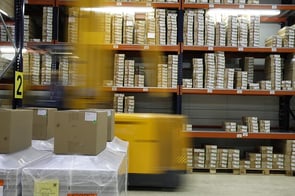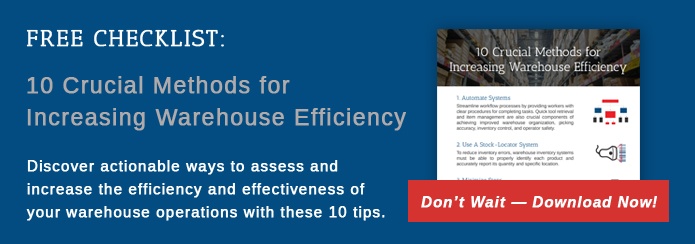 A study sponsored by Intermec back in late 2012 found that, on average, warehouse workers lose 15 minutes per day due to process inefficiencies. That may not seem like much, but it adds up quickly if you look at the bigger picture. Multiply that 15 minutes by all the days worked by the number of employees working and the result is staggering.
A study sponsored by Intermec back in late 2012 found that, on average, warehouse workers lose 15 minutes per day due to process inefficiencies. That may not seem like much, but it adds up quickly if you look at the bigger picture. Multiply that 15 minutes by all the days worked by the number of employees working and the result is staggering.
Take, for example, a typical mid-sized warehouse employing 50 workers. If you do the calculations, it adds up to just under 3,000 hours lost in a single year. That is a lot of hours lost because your warehouse efficiency is lacking.
The Nature of the Warehouse
Warehouses are a study in constant motion. New inventory comes in and gets put on the shelves. The product is picked when an order is received. It is packed for shipment and then sent out the door. In between each of these steps, workers are moving throughout the warehouse space either on foot or using a forklift. Add in cycle counting and the floor can be quite busy most of the time.
Any inefficiency in the warehouse set-up, product placement, and/or in receiving, storing, picking, and shipping processes can cause a warehouse worker to lose time. This adds up to lost man hours that cannot be recouped.
Addressing Warehouse Inefficiencies
A study conducted by the School of Industrial & Systems Engineering at the Georgia Institute of Technology found that only 30 percent of warehouse space was optimized for efficiency. That translates to 70 percent of a warehouse being inefficient in some way.
What can a warehouse manager do to decrease inefficiencies? Here are some suggestions:
- Review all processes for inefficiencies at least once a year.
According to the Intermec study cited above, about 30 percent of the managers surveyed had not conducted efficiency reviews of workflows in the past year. The results of such a review will give you vital information on where your warehouse inefficiencies lie and how to improve them. - Open up communications with warehouse employees.
These are the men and women who are using the established processes, day in and day out. They can tell you if something is not working or if it is not as efficient as it could be. They may make suggestions on relocating higher velocity products to more accessible locations. They may recommend streamlining more processes or adding automation. Ask question to discover what they know! - Set aside time and a budget each year to address inefficiency issues.
You've identified the problems in your workflow. You've received input from the workers on the floor. So, when do you address these inefficiencies? Generally, the best time to start making incremental changes is during a slower part of the year.
If you discover that you will need additional funding for moving racks or buying new equipment, try to incorporate provision for these purchases into your annual budget. You will be able to better support this expense by proving the number of man hours lost to otherwise inefficient processes. - Implement a management system into your facility (or upgrade the one you have).
When you utilize an automated system that serves to manage your warehouse's workflow, it will help improve your warehouse efficiency overall. A management system can tell you how much product you should have on hand, where it is located, and which products have the highest velocity. All of this information is invaluable when it comes to improving the efficiency of your warehouse.
Don't let inefficiencies and lost man hours blow your labor budget for the year. Take the time to identify and address the areas of inefficiencies that exist, and be willing to implement more effective systems.



